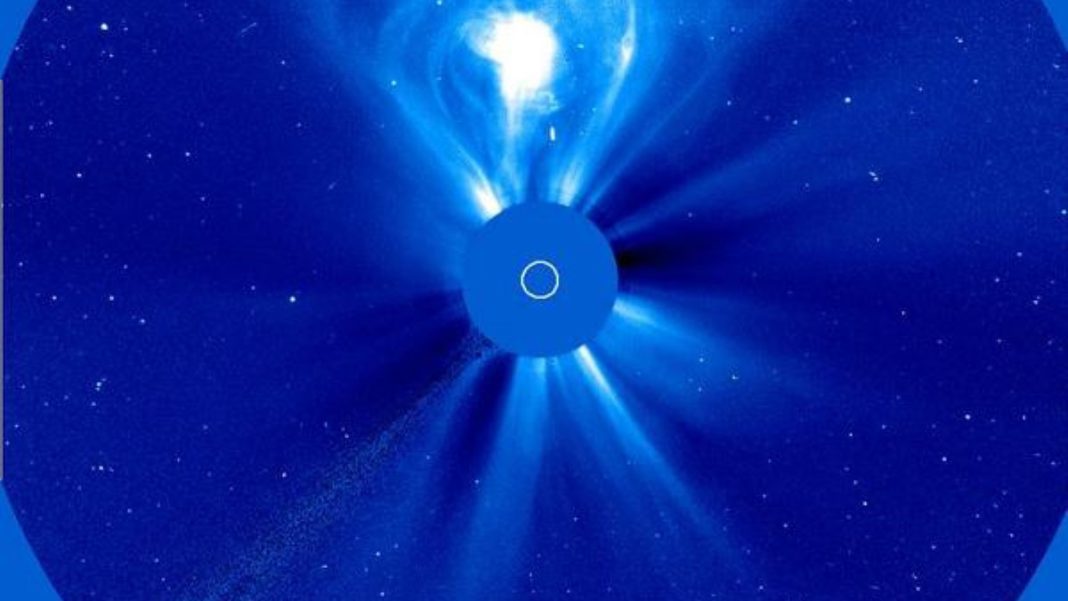UNITED STATES: In a groundbreaking discovery, a solar eruption that occurred in October 2021 was detected simultaneously on Earth, the Moon, and Mars. This rare event allowed scientists to gain valuable insights into how a planet’s magnetic field and atmosphere work together to shield against potentially harmful radiation from coronal mass ejections (CMEs).
The astonishing detection was made even more impressive by the fact that Earth and Mars were on opposite sides of the sun, with a vast distance of approximately 155 million miles (250 million kilometres) between them at the time of the eruption.
The ExoMars Trace Gas Orbiter (TGO) on Mars, the Chang’e-4 Moon Lander, NASA’s Lunar Reconnaissance Orbiter (LRO) on the lunar surface, as well as the Euglena and Eu:CROPIS orbiters around Earth, all captured the outburst of highly energetic charged particles across these solar system bodies. This event highlighted the need to protect human space exploration missions from the dangers of space radiation.
Colin Wilson, the ExoMars TGO project scientist, emphasized the importance of measuring high-level radiation events to prepare for future long-duration crewed missions.
While Earth’s natural magnetic field shields life from solar radiation, Mars and the moon lack such protection. As a result, charged particles can strike their surfaces more frequently.
The detection of secondary radiation from these bodies underscores the need to understand the impact of solar radiation on future crewed missions to these destinations.
Radiation absorption can lead to adverse effects such as radiation poisoning, which can be fatal if the absorbed dose exceeds a certain threshold. The data from this CME event provided valuable information about the radiation levels experienced on the Moon and Mars.
In the moon’s vicinity, the LRO measured a substantially less than lethal dose, providing important insights for future lunar missions. Similarly, measurements taken by the ExoMars orbiter in orbit around Mars revealed a low radiation dose thanks to the planet’s thin atmosphere, which reduced potential absorption by approximately 30 times.
The CME was also observed by other missions, including the Solar Orbiter, SOHO, and BepiColombo, providing additional vantage points for studying these solar events.
As humanity ventures further into space with plans for crewed missions to the moon and Mars, understanding the dynamics of space radiation becomes crucial.
The knowledge gained from this simultaneous detection of a CME across multiple celestial bodies will contribute to better safeguarding astronauts and enhancing our understanding of space weather.
Also Read: NASA’s Voyager 2 Regains Contact with Earth after Communication Glitch in Deep Space



